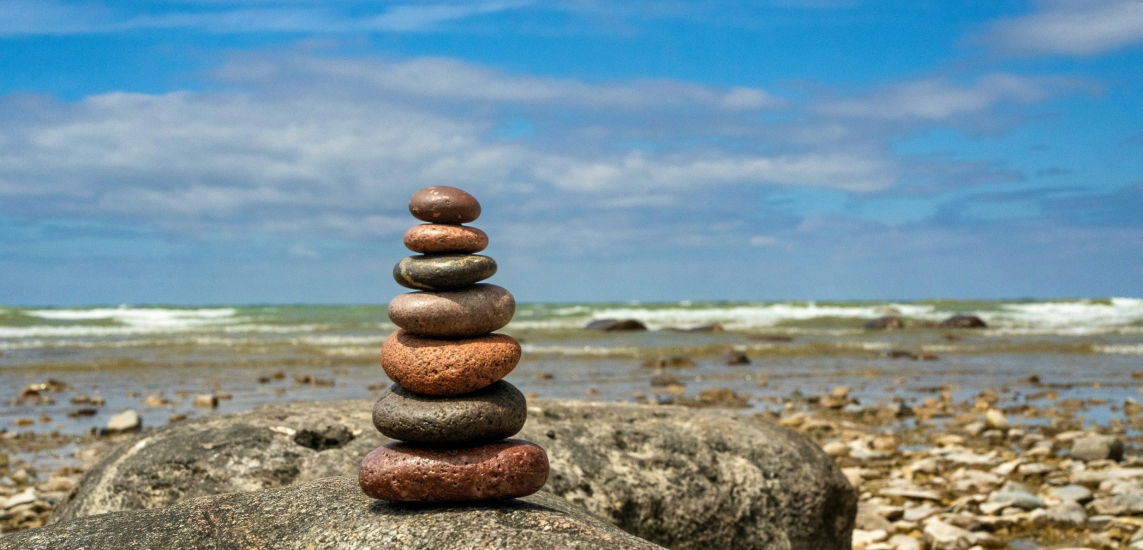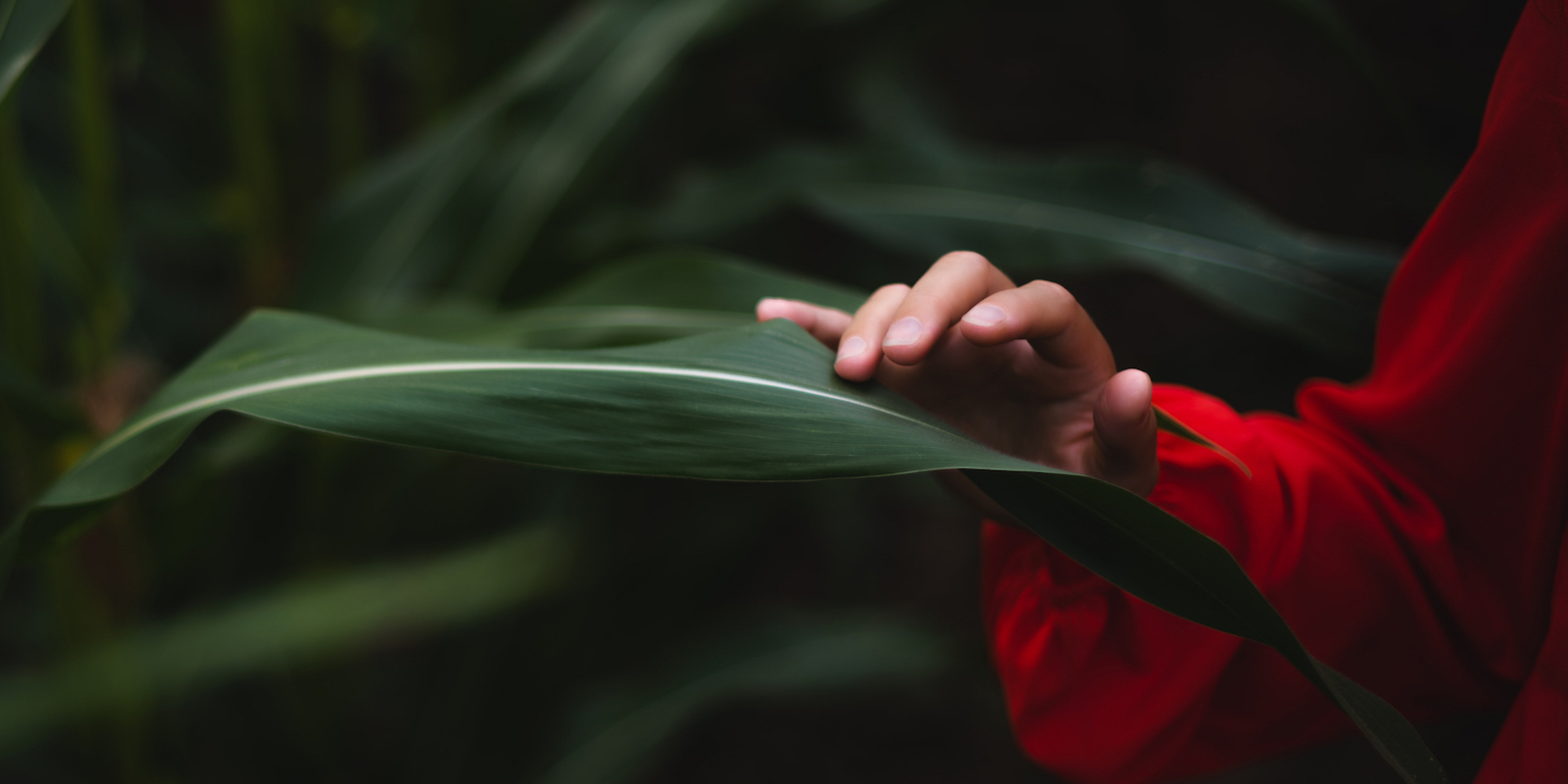For many of us, it feels as though the world is changing faster than ever. From increasing geopolitical tensions and environmental devastation to rapidly increasing connections through expanding technologies — modern day conditions have led to increased anxiety and wavering hope as we struggle to believe in a peaceful future. As the world around us feels like it’s faltering, so too does the inner world.
At the same time, more and more people are opening themselves to ancient teachings about mindfulness, peace, and oneness. This growing interest in expanding our understanding and consciousness comes perhaps as a countermove to mitigate the trying times we find ourselves in.
And still, while many of us are deepening our personal mindfulness practices and looking at ways to engage more consciously, finding peace isn’t as easy as it might seem. While certain teachings and practices might be simple, they’re not always so quickly integrated.
How To Find Peace Amidst Life’s Flux
Finding inner peace in a world we often fear takes time — and it begins by recognizing the power of our thoughts. When we hear about natural disasters, acts of violence, and other heartbreaking events, it is natural that something in us retracts. Our body’s innate stress response kicks in, releasing a surge of stress hormones that are designed to protect us in face of real threats.
While this innate system indeed supports us when we’re in imminent danger, persistent fear equates to chronic stress. This stress and stimulation, in turn, depletes our energy, resiliency, and feel-good hormones. If we are constantly bombarded by all that is “wrong” with the world (whether through social media, news sources, or our conversations), we’re depleting our capacity to make meaningful change within and around us.
Read more: Read part one of the “Coping with Chaos”-series and how to build better boundaries to cope with negativity in mass consciousness.
Various mindfulness exercises and techniques can help us to shift our relationship with the world around us. By mindfully embracing these practices, we start to find a growing sense of inner peace — and a new way forward.
1. Gratitude
“Gratitude unlocks the fullness of life. It turns what we have into enough, and more. It turns denial into acceptance, chaos to order, confusion to clarity.” — Melody Beattie
One of the very first techniques we can adopt is a gratitude practice. Gratitude has been found to modulate neural activity and improve emotional regulation and motivation. It’s also been found to increase mental and emotional resilience, increase prosocial behavior, improve communication, enhance appreciation and compassion, encourage collaboration, and enhance understanding amongst groups. All of these benefits promote both inner and outer peace and wellbeing.
We can practice gratitude in various ways. For example:
- Mealtime Gratitude Practice: Take a few minutes before dinner (or any other meal that is well-suited with your schedule) to silently run through all you have to be thankful for.
- Gratitude Letters: When we are grateful for another human in our lives, we can take this appreciation a step further by writing a letter and delivering it to the individual we love.
- Gratitude Journal: A great bedtime practice for anxious minds, we can explore gratitude by writing a daily list of all the things we are thankful for – from our breath and our body to our loved ones and the environment that supports us.
Read more: Explore how to start living a life of gratitude besides writing down list of things you are grateful for.
The more we root ourselves in gratitude, the easier it becomes to see what’s “right” with the world. As it encourages compassion, collaboration, communication, and pro-social behavior, it also facilitates our own ability to contribute to a more positive, loving world.
2. Mindfulness Of Thought & Emotions
Enhancing our awareness of the thoughts and emotions that move through us is another important step to help mitigate the effect of the challenges we face. However, it’s not enough to recognize the impact that fear has on us; we need to catch it in the act when it arises.
So, when we’re faced with something alarming that doesn’t require a present moment action or response (for instance, news of a natural disaster or loss of ecosystems), we can take a moment to quietly notice the thoughts and feelings that are moving through both our body and our mind. Without labelling them as “right” or “wrong”, we can become more curious and compassionate about the inner experience. What are they trying to show us?
Discover thousands of free guided mindfulness meditations.
Chances are they’re pointing out the love and care we have for the environment, for other humans, and for this life we are experiencing. When we reconnect with this love that is present within us, we might then find the inspiration to start engaging in the world in nourishing ways. In other words, mindfulness of thoughts and emotions can help us transform those energies into positive outward action, constructive and compassionate conversation, and innovative visions for a bright future.
3. Mindful Media Engagement
Furthermore, we can help to mitigate the effect of the outside world by becoming increasingly mindful of how we engage with it. Never before have humans had such a connection to worldly events than now. With social media and news feeds always at our fingertips, it can be difficult to give ourselves a substantial break from the challenges in this world.
It is important that we’re informed about the very real, very troubling difficulties we’re facing individually, culturally, and environmentally. However, when we notice “being informed” takes precedence over our own mindful, loving contributions to the world, that can be a signal that we need to refocus.
Mindful media engagement requires us to be aware of how often we’re watching the world through a screen. It also asks us to be aware of how these words and images are affecting us – do they promote love, creativity, and peace? Or are they leaving us anxious, disconnected, and caught in inaction?
Read more: This article explores the phenomenon of phone-induced anxiety and includes guided smartphone meditation practices.
4. Loving Action
Briefly mentioned as one end result of emotional awareness, loving action is another tangible way we can reconnect with inner peace amidst the flux of this world. We might ask ourselves:
Despite what we face collectively, how can I contribute to my community and to this world in a meaningful and loving way?
When we truly believe in the power of love and the potential to build a more peaceful, sustainable world, it becomes less effortful to contribute to its manifestation. Whether we contribute in big or small ways, you might see each thoughtful action sending out a ripple of values that uplift and support us. It doesn’t matter what loving action looks like for each of us, so long as it is rooted in love and peace.
Loving action, or altruism, provides us with a sense of meaning, purpose, and reminds us of our interconnectedness. Through each of these actions, we deepen our own sense of peace and contentment at the same time that we contribute to that of others.
These guided meditations by Sean Fargo help to cultivate and practice what he has been suggesting in this article: gratitude, mindfulness for thoughts and emotions, mindful media engagement and loving action:
- Expressing Gratitude Each Day Sean Fargo 4:36
- Relieving Stress Sean Fargo 6:31
- Sharing Kindness Sean Fargo 14:22
- Just 3 Mindful Breaths Sean Fargo 7:04
We cannot deny that many of us around the world are facing immense difficulty with quickly shifting environmental, cultural, technological, and political landscapes. However, what matters is what we do with this recognition. Will we take our knowledge of the world’s difficulties and use it to innovate and cultivate something new? Or will we remain weighed down by it?
Through mindful awareness, we start to see the beauty in the world that often gets masked by its darkness. We empower ourselves to see through the thoughts and feelings that threaten to grip us. We start to see more clearly the impacts of technology. And we begin inquiring: How can I make a difference that will bring more love and peace to myself and to the world at large?
One mindful moment at a time, we breathe life into the type of world we wish to live in – and that brings us and all those around us a deep sense of love and peace.
Read more: The benefits of practicing mindfulness already unfold with the first mindful breath and keep on growing with your practice.







